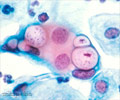Gonorrhoea can be treated with antibiotics but the prevalence of drug resistance to gonorrhea is high in China, suggesting for new treatment options.

‘Dual therapy with azithromycin and ceftriaxone, which has been recommended by WHO and many countries to treat gonorrhea, may not prove effective in China.’





The prevalence of dual resistance to these agents in N. gonorrhoeae isolates increased from 2013 to 2016. The results suggest that dual therapy with azithromycin and ceftriaxone, which has been recommended by WHO and many countries to treat gonorrhea, may not prove effective in China. Antimicrobial resistance in N. gonorrhoeae is a global threat in the control of this infection. China has a high rate of antimicrobial consumption but has limited data on antimicrobial resistance in gonorrhea.
In this study, minimum inhibitory concentrations (MICs) of azithromycin and ceftriaxone were determined for 3,849 clinical isolates from patients with gonorrhea who provided samples during the time period 2013 to 2016 in 7 provinces in China.
Yin and colleagues found a high prevalence of resistance to azithromycin and decreased susceptibility to ceftriaxone in the study population. The prevalence of concomitant RTA and DSC increased from 1.9% in 2013 to 3.3% in 2016.
The study utilizes a convenience sample of clinical isolates, and most participants were symptomatic, heterosexual, residing in coastal locations, and male. However, to our knowledge, this is the first national study on the susceptibility of N. gonorrhoeae to azithromycin and ceftriaxone in China.
Advertisement
Source-Eurekalert










